U.S. data flow to restart; Nvidia earnings loom large - what’s moving markets
As noted, I’ve pulled together the below exclusive ChartStorm just for you as a welcome gift.
1. Time & Cycles: Respect the Cycle. Markets, macro, society, the physical world — all go through cycles. The sooner you realize that and learn to move in sync with the cycle in your asset allocation and portfolio positioning (and state of mind), the sooner you will learn to recognize the telltale signs of turning points and the momentum in between and become a victor and not a victim of the cycle.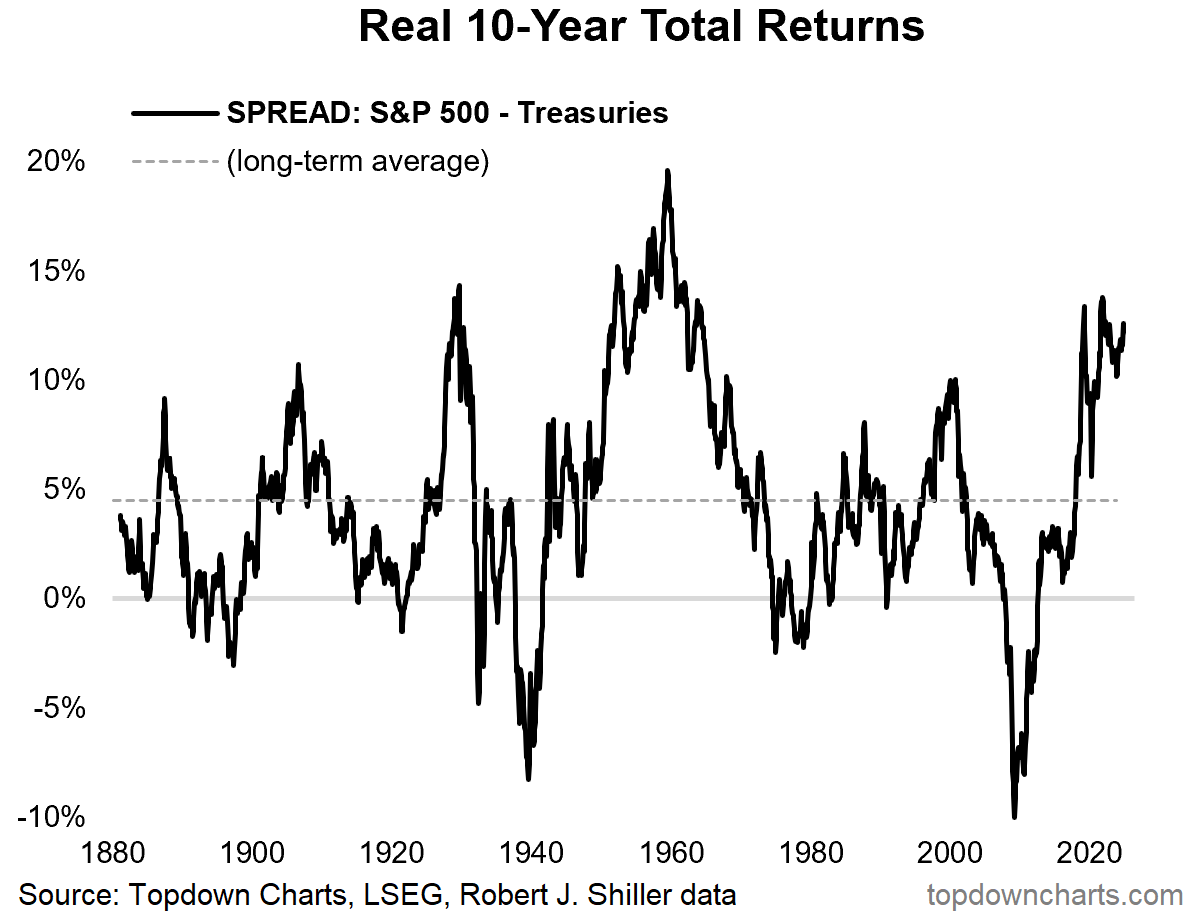
Source: Weekly S&P500 ChartStorm - 15 December 2024
2. Respect the Long-Term Trend: But at the same time you have to respect the trend, in the long-run the experience has been at least in the USA that stocks go up over time. Now as alluded to above you do get interludes to and movement around that trend, but you don’t want to get too bearish during the dips (nor too carried away at the peaks when risk signs become obvious, and alternative investments and diversifiers become more attractive).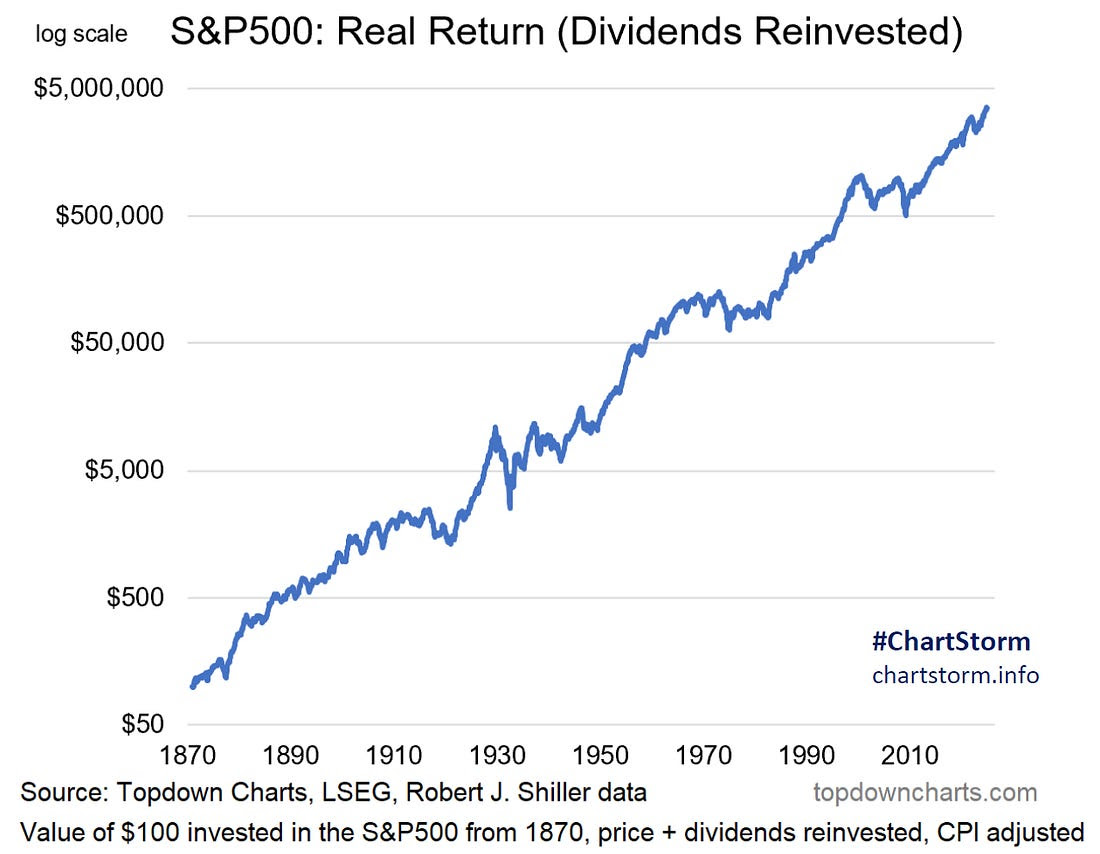
Source: ChartStorm - Perspectives Pack
3. But Know that there are Exceptions: And as much as I like a good upsloping long-term stock market chart, there are plenty of exceptions both historical and definitely across countries (e.g. see Japan from 1990 to 2020). The chart below provides an unfamiliar look at the US stock market, yes it was a completely different time and market and economy and technological era etc, but it goes to show that at least during the period 1851 to 1931 it was not a smooth up-to-the-right ride. It’s this kind of perspective that can help immunize you to hubris and market manias.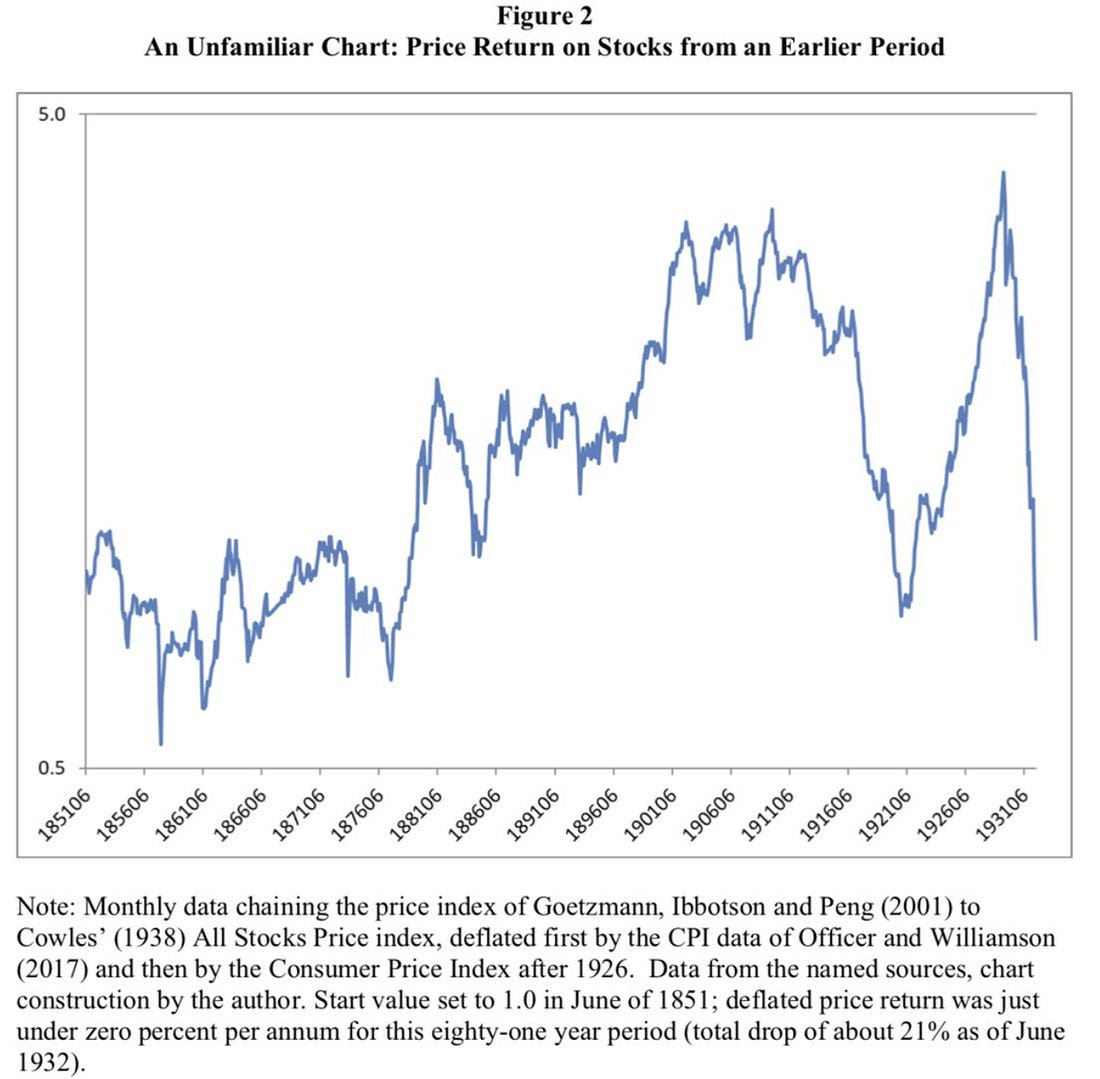
Source: Weekly S&P500 ChartStorm - 22 September 2024
4. Be Alert to Big Changes in Market Regimes: This chart is a favorite of mine because it shows how in 2020 something snapped… the world turned the economy off, and turned it back on again AND threw unprecedented scale, scope, speed, and spread of stimulus measures globally. This ignited a frenzy of speculation, blowing a procession of bubbles. Very few saw it coming in the depths of despair of March 2020, but I do have to pat myself on the back a little on this front with my well-timed blog post “Global Equities: Generational Buying Opportunity Emerging”. We don’t always get it right, but sometimes the charts are just yelling at you.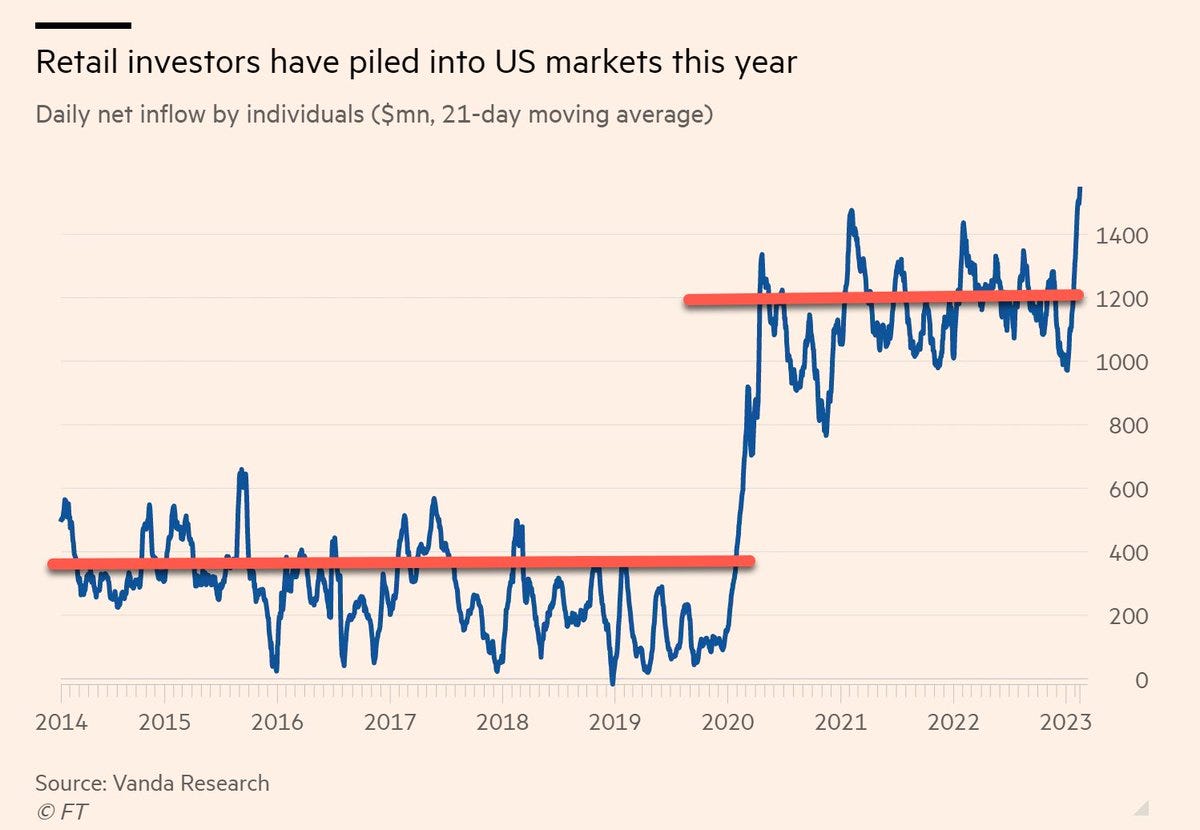
Source: Weekly S&P500 ChartStorm - 24 December 2023
5. Things Change: This is a great case study in market anomalies being arbitraged away as technology, theory, and practice become more sophisticated. It used to be that a stock getting added to the index would see a pop in performance, and those booted out of the index would see a slump. But in recent years this effect has been arbitraged away as folk began to better understand index methodology and positioned to front-run any anticipated index additions/deletions.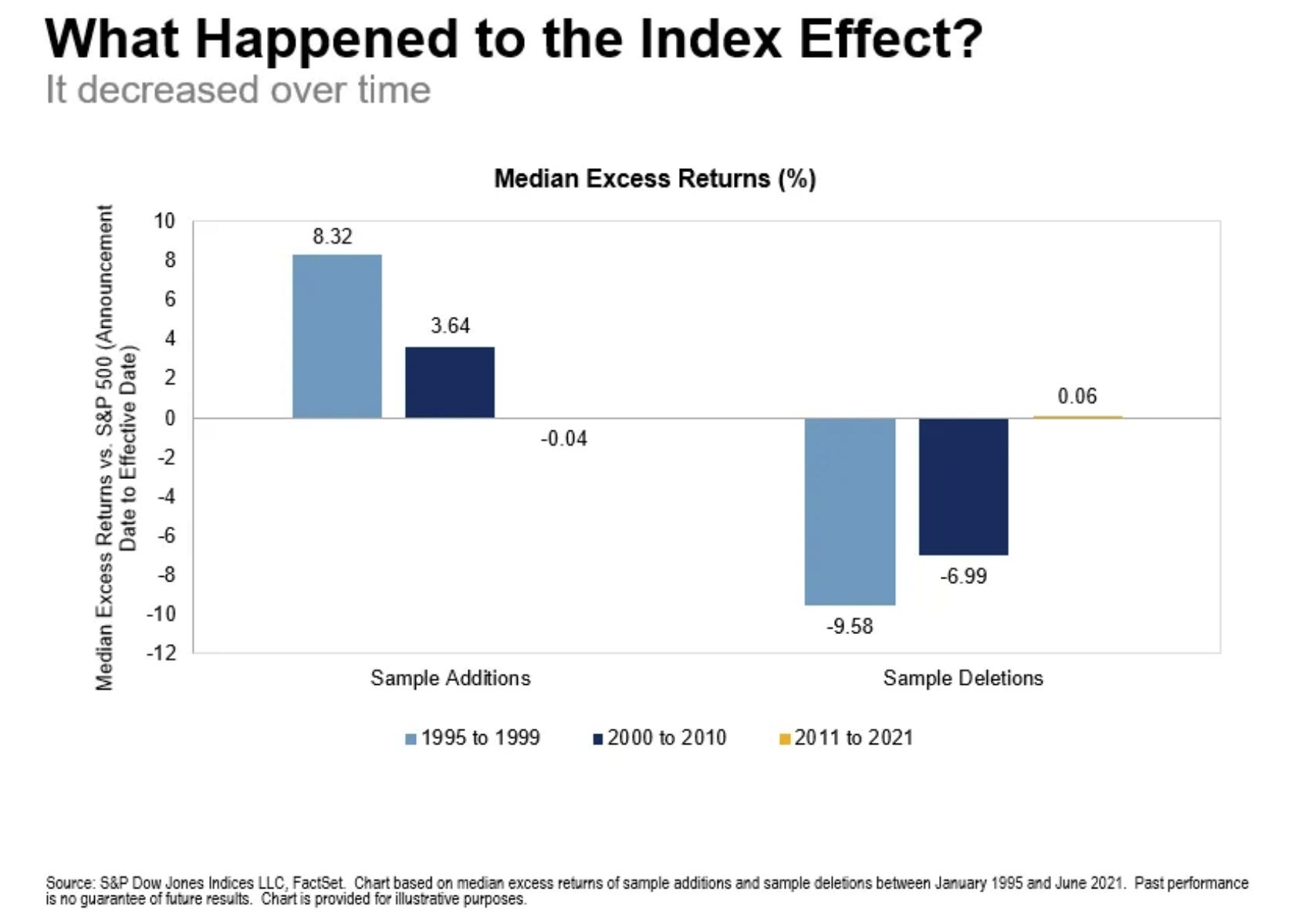
Source: Weekly S&P500 ChartStorm - Timeless Classics
6. Know What You Own (part 1): One of the key features of markets in recent years has been the rise and rise of a select few big tech stocks, call it mag 7 or whatever you want, but one thing that few index investors probably realize is how concentrated the market-cap weighted indexes have become. For instance the top 10 stocks carry almost 20x (34% vs 2%) their weighting in the equal-weighted version of the S&P 500.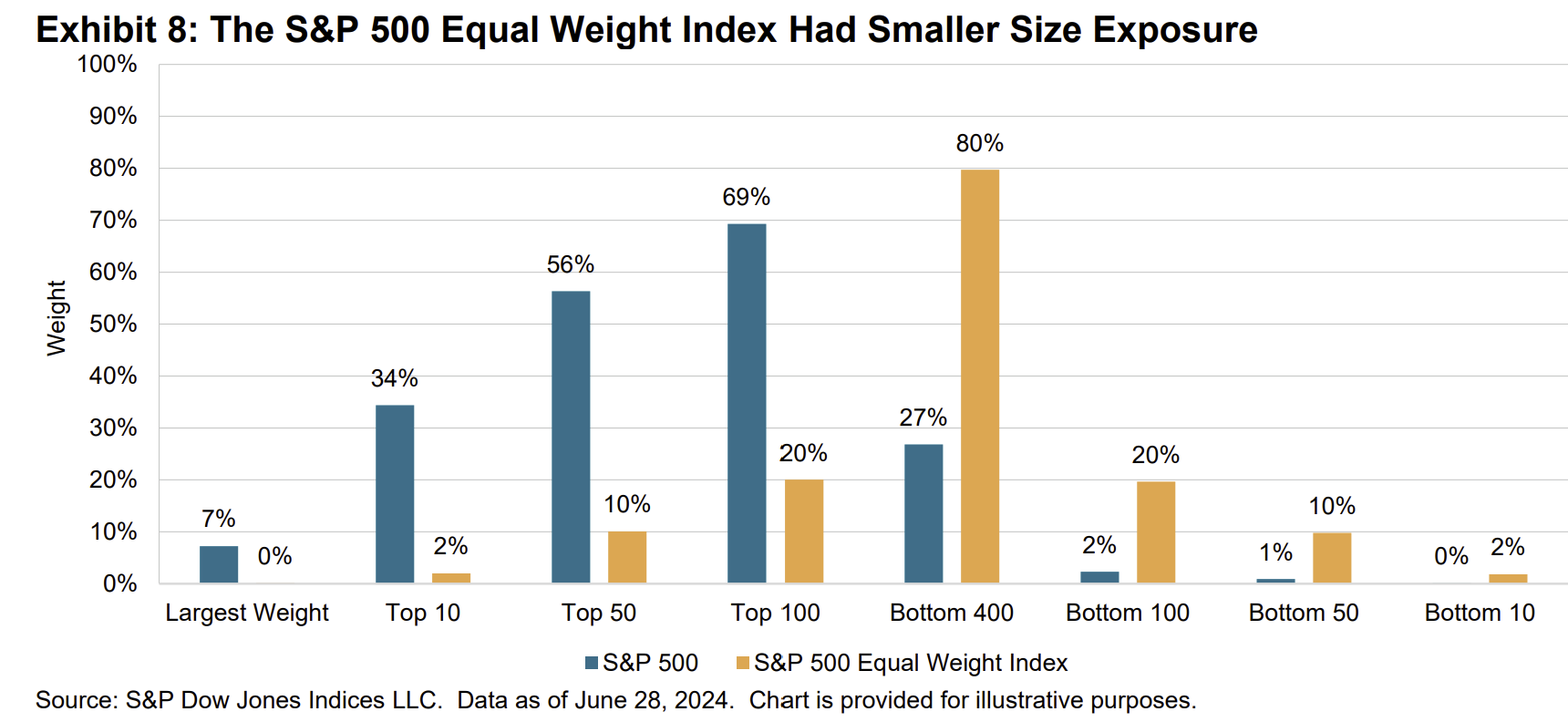
Source: Weekly S&P500 ChartStorm - The Best Charts of 2024
7. Know What You Own (part 2): It’s about being aware of what you own, if you hold a passive index-tracking portfolio people need to realize that it’s not as diversified as you might think. As of early 2025 the index was heavily skewed into overvalued overhyped tech stocks, and carried a record low weighting to defensive stocks — so a double-whammy of being a much more riskier portfolio than usual.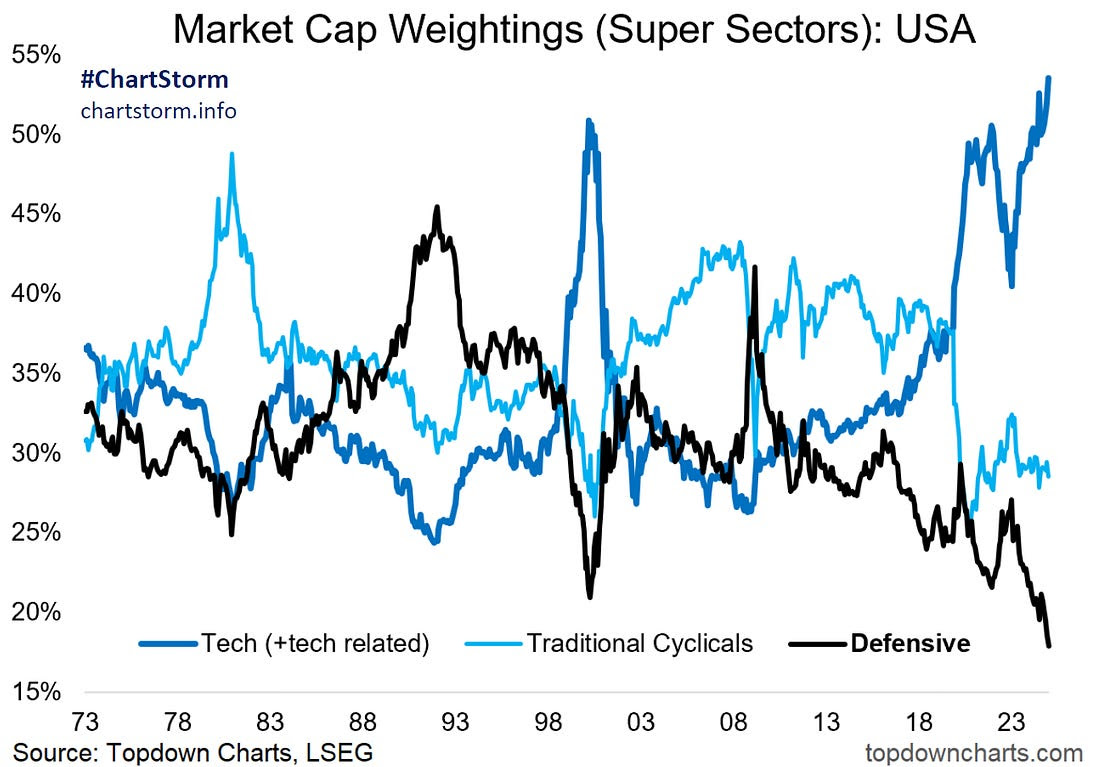
Source: ChartStorm Perspectives Pack - 2025
8. Valuations Signals and the Market Cycle: Back on cycles and navigating the twists and turns of markets, it’s important to understand how things change through different stages of the cycle — the market, people, the crowd, yourself, and most importantly the indicators we used to navigate the cycle change in their expression and significance at different stages. For example at extremes, valuation signals become highly meaningful and important, yet through the range they become almost more of momentum and confidence indicators. You need to move and adapt with the cycle, and charts help us do that.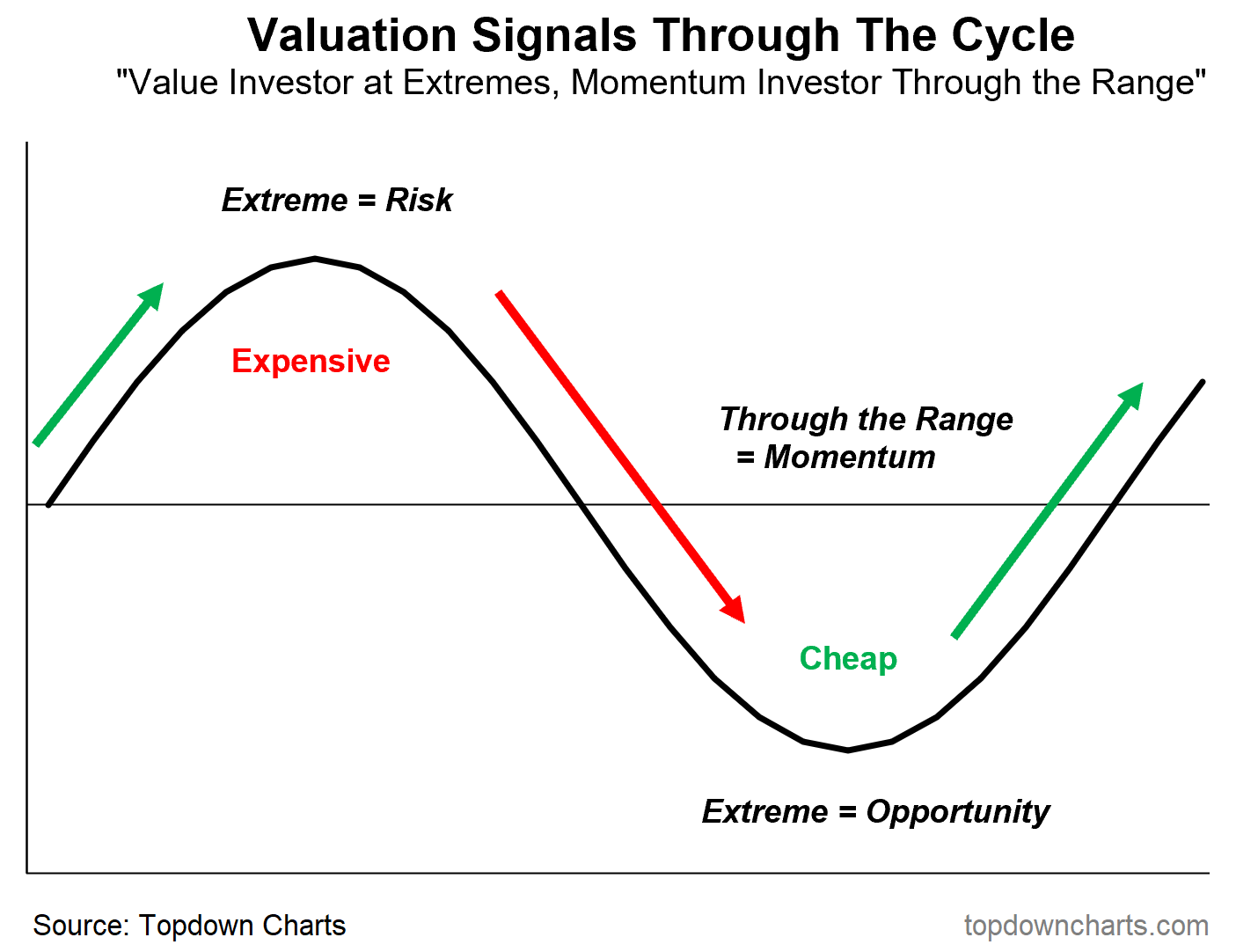
Source: Weekly S&P500 ChartStorm - Educational Special Edition
9. Know thyself, Know thy Crowd: Expressed in a different lens, if you’ve been around markets long enough you probably recognize well the procession of emotions represented in this visual… either in yourself, others, or in the crowd at large. Once you understand these all-too-human tendencies you can learn to identify them in yourself and others and basically go with the crowd through the range, and against the crowd at extremes, “be fearful when others are greedy, and greedy when others are fearful” as the investing legend Warren Buffett would say.
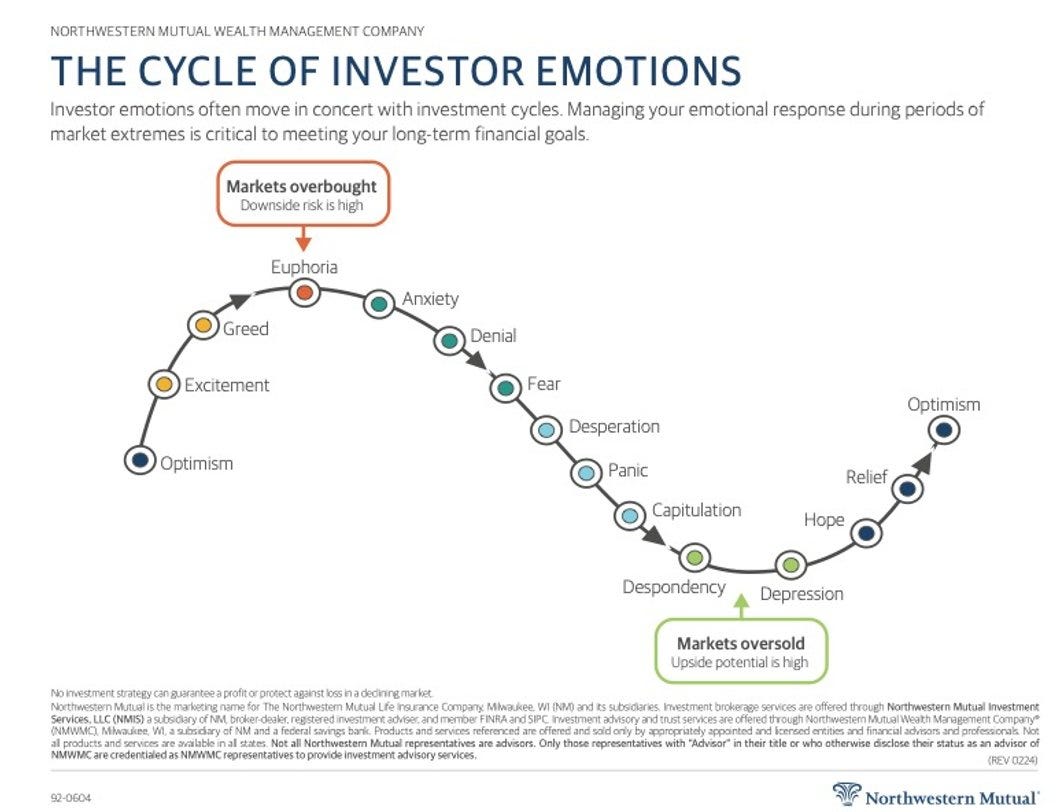
Source: Weekly S&P500 ChartStorm - The Best Charts of 2024
10. Learn to Love the Bubble: Print this one and pin it to your wall!
Important lesson from history: bubbles and cycles are a constant... because human nature is a constant. But also a reminder; smart people do dumb things all the time (trust me I know) — building smart systems and processes informed by good data can help even the best of us keep on track and sail with an even keel, despite what Mother Nature may throw at us.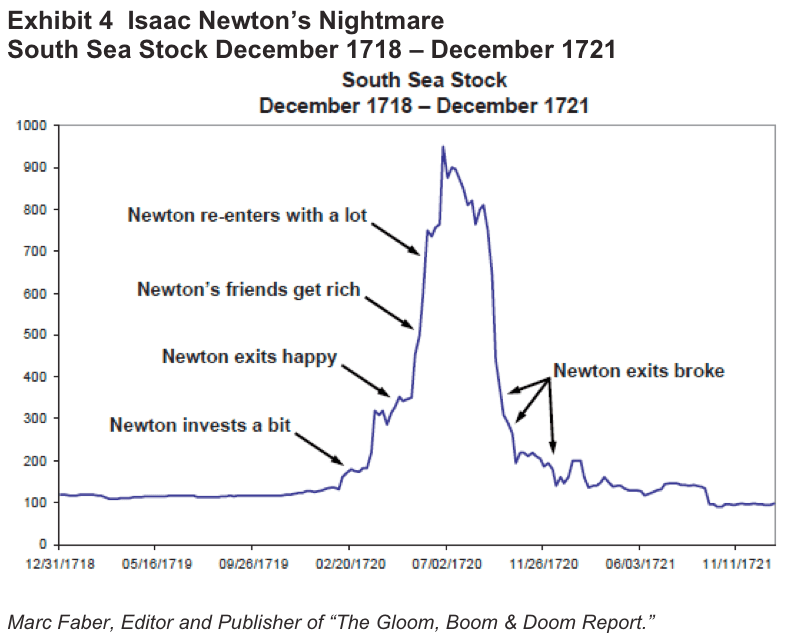
Source: Weekly S&P500 ChartStorm - 18 August 2024
